ISSN ONLINE(2278-8875) PRINT (2320-3765)
ISSN ONLINE(2278-8875) PRINT (2320-3765)
Sk.Riyaz Hussain1, Suresh Kalidindi2
|
| Related article at Pubmed, Scholar Google |
Visit for more related articles at International Journal of Advanced Research in Electrical, Electronics and Instrumentation Engineering
In this paper, a design and analysis of Microstrip patch is presented. The proposed antenna has simple structure with U-slot operating for the application of Amateur radio[4]. The overall dimension of the antenna comes around 16.22mm×20.62mm×2.15mm. The impedance matching and radiation characteristics of the designed structure are investigated by using MOM based commercially available electromagnetic solver IE3D. The simulation results show that the antenna offers excellent performance for Amateur radio application ranging from 5.65-5.85 GHz with return loss of below -10 dB . The proposed antenna gives directional pattern in the E plane and Omni directional radiation pattern in the H plane over the frequency range and relatively stable.
Keywords |
| Microstrip, Amateur radio |
INTRODUCTION |
| Recent days, there is a significant need to design antennas, which are compact in size. Dedicated antennas are in urgent demand for wireless applications, which include Amateur Radio. In times of crisis and natural disasters, Amateur radio is often used as a means of emergency communication when wire line, cell phones and other conventional means of communications fail. It uses designated radio frequency spectrum for purposes of private recreation, non-commercial exchange of messages, wireless experimentation, self-training, and emergency communication. Amateur radio operates in the frequency band 5.650GHz to 5.670GHz[6] for up-link & 5.830GHz to 5.850GHz for down-link. |
| Although many Computer-Aided Design (CAD) systems are developed to design antennas but rarely we see the mathematical explanation for the designing[1],[4]. There are few fundamental formulas that are available to calculate the outer dimensions of the microstrip antennas, and we don’t have any clue how to find the dimensions of the inner patch. Here in this paper we used U-slot inside the microstrip patch, whose dimensions are calculated mathematically and the same is explained in the proceeding chapters |
II. ANTENNA DESIGN |
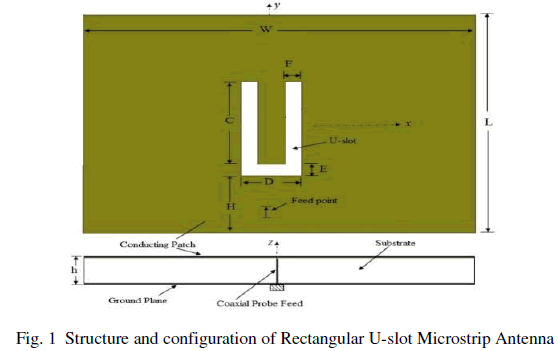 |
| Fig. 1 shows the structure and configuration of the proposed U-shaped slot rectangular microstrip antenna which coverage 5.65 – 5.85 GHz frequency band. |
III. MATHEMATICAL ANALYSIS FOR ANTENNA DESIGN |
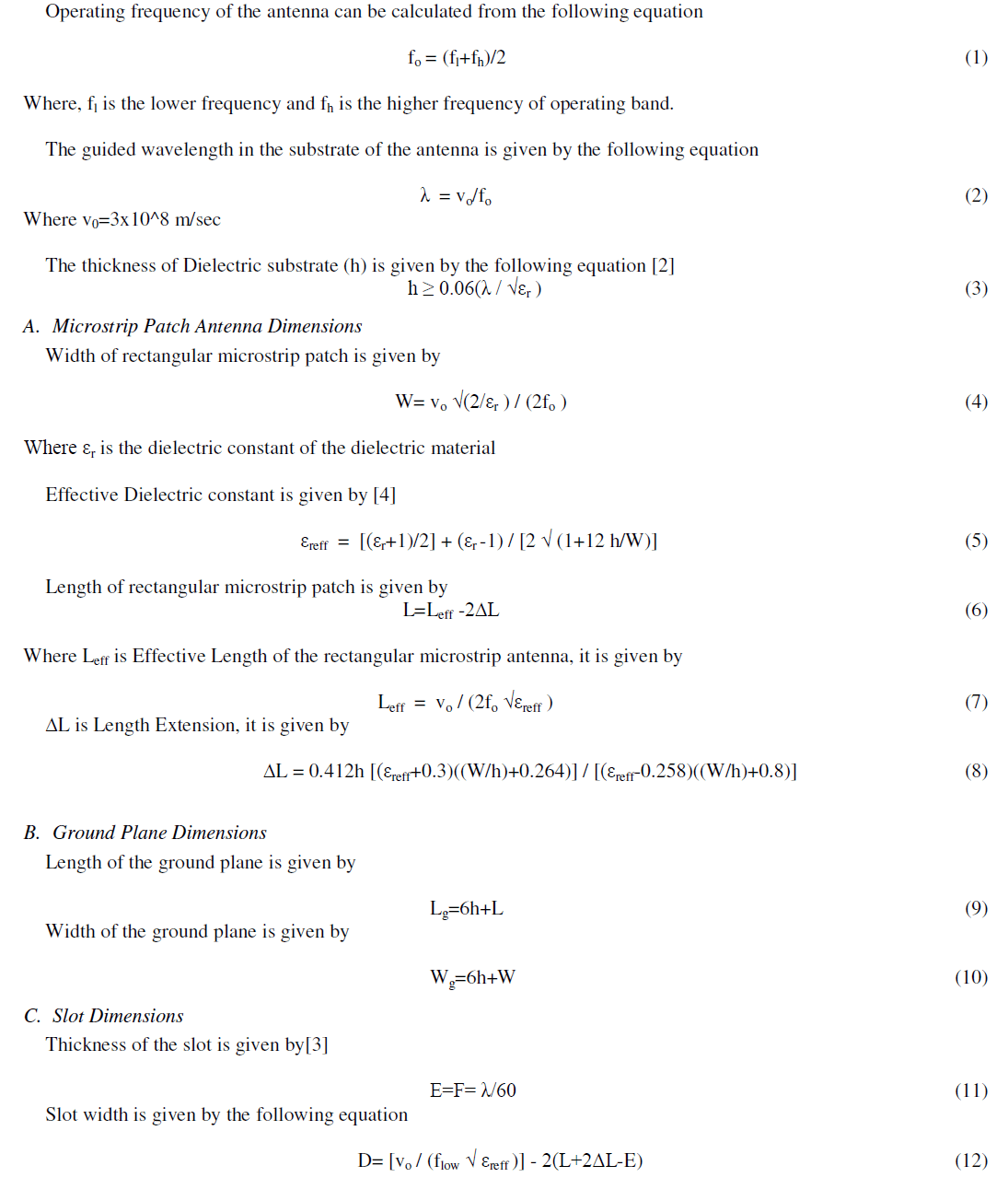 |
 |
| From the mathematical analysis we have obtained the specifications for the antenna that operate effectively in 5.650 – 5.850 GHz and those dimensions are tabulated in the below Table 1 by taking the dielectric constant εr = 2.2. For this antenna U-Slot[9] is placed at the centre of the antenna as shown in the Fig. 1. The U-Slot is placed at a height of H = 5mm from the bottom edge. Probe is feed down to the U-Slot to get optimum results. |
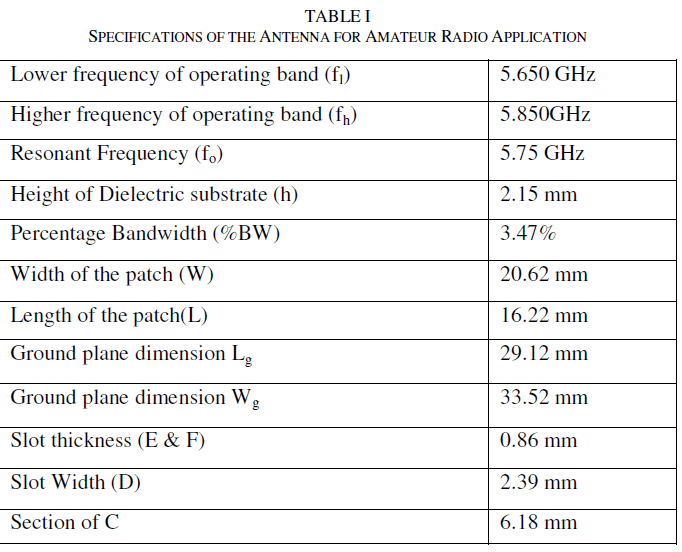 |
| Dimensions for microstrip antenna for Amateur Radio application, which operates at the 5.650 – 5.850 GHz band (5.650 - 5.670 GHz for Up-Link & 5.830 – 5.850 GHz for Down-Link) will require Band width of about 3.47% and W X L is 20.62 X 16.22 mm. The dimensions of the Amateur Radio Antenna are noticeably compact size. |
IV. RESULTS |
| Fig. 2 shows the return loss curve for the proposed Amateur Radio Antenna. From the return loss curve we can say that the antenna can operate efficiently in 5.56 – 5.90 GHz with a percentage bandwidth of 5.9%. The required band - width for Amateur radio application is 3.47%, hence we got more than the required bandwidth. From the below Fig. 2 return loss is about 19db near 5.75 GHz thus we can say it can operate more efficiently at the resonant frequency. |
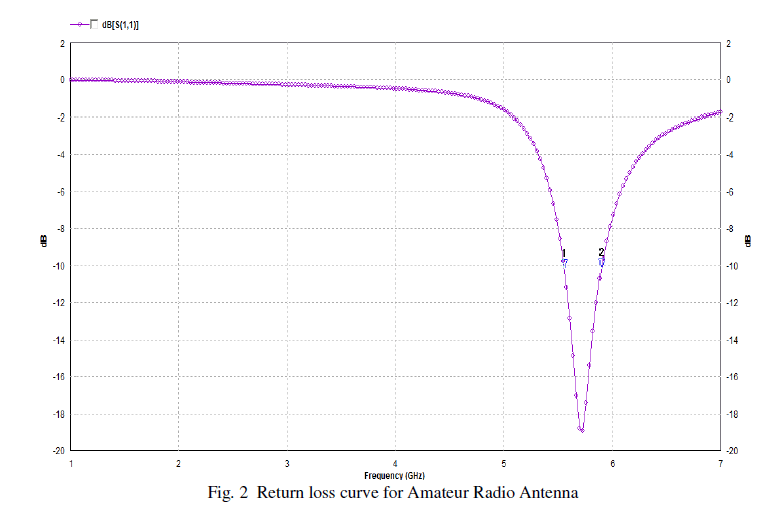 |
| Fig. 3 shows the VSWR curve for the proposed Amateur Radio Antenna. From 5.54 GHz to 5.91 GHz the VSWR is less than 2 and It has VSWR = 1.24 near the resonant frequency |
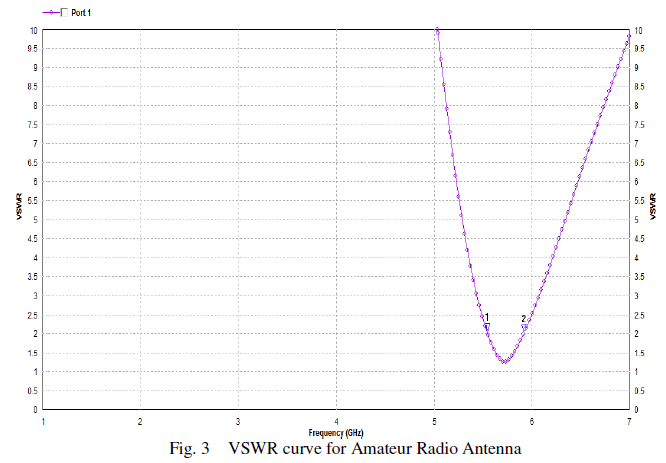 |
| Fig. 4 shows the Gain Vs Frequency curve for Amateur Radio Antenna. It has a gain of about 6.57dB at resonant frequency. |
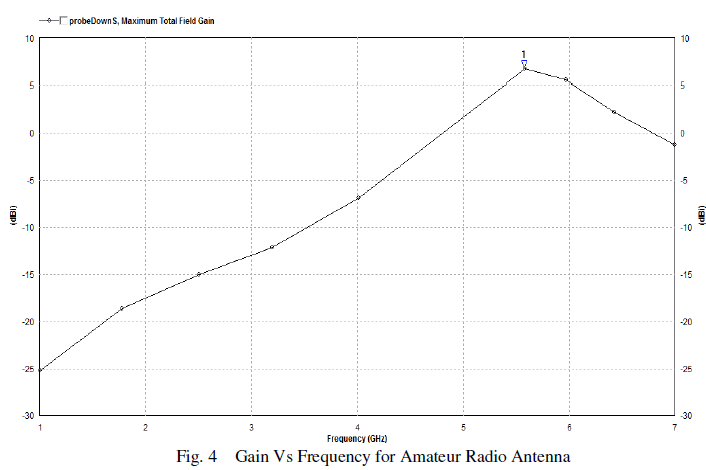 |
| Fig. 5 shows the Directivity Vs Frequency curve for Amateur Radio Antenna. It has a directivity of about 8dB at resonant frequency. |
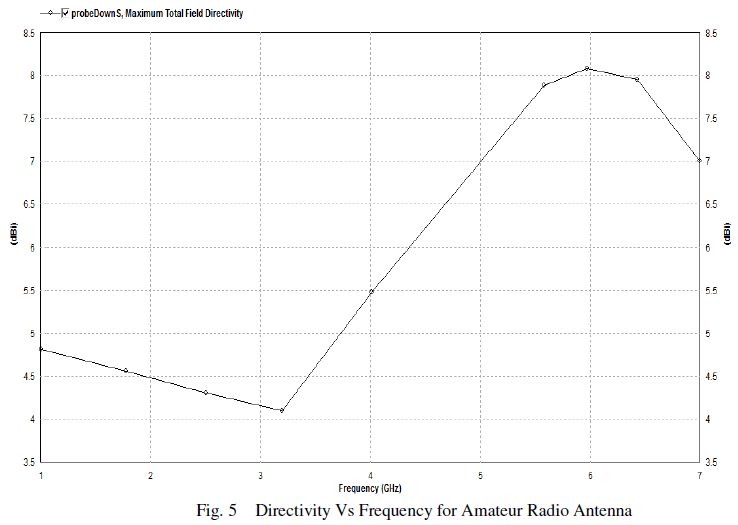 |
| Fig. 6 shows the Antenna Efficiency Vs Frequency curve for Amateur Radio Antenna. It has a efficiency of about 75% at resonant frequency. |
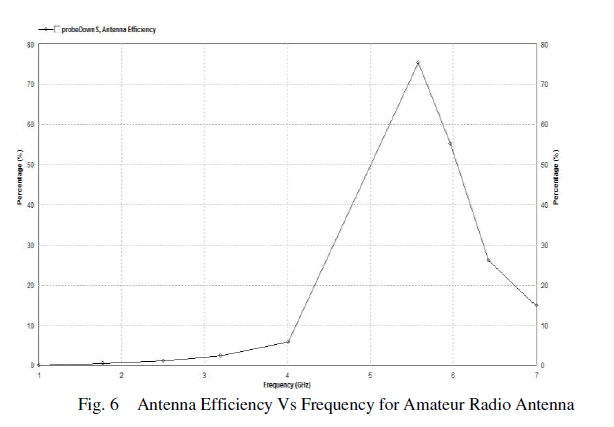 |
| From all the above curves we can say that the Amateur Radio Antenna can operate more efficiently with more than required bandwidth, 1.24 VSWR, 6.7dBi gain, 8dB directivity and 75% antenna efficiency. |
CONCLUSION |
| By using Mathematical analysis we have designed the U-Slot microstrip antenna for Amateur Radio application which operates in the frequency band 5.650GHz to 5.670GHz for up-link & 5.830GHz to 5.850GHz for down-link with compact size, efficiency of about 75%, gain 6.7 db, percentage bandwidth 5.9%, required bandwidth for Amateur radio application is 3.47%, hence we got more than the required bandwidth. |
ACKNOWLEDGMENT |
| The Authors would like to thank Prof.R.V. Rajkumar, Vice-chancellor, RGUKT and Prof. Ibrahim Khan, Director, RGUKT for their constant support and encouragement on this work |
References |
|